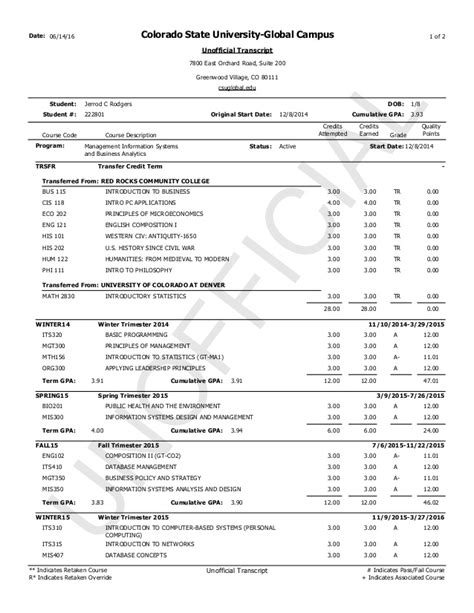An unofficial transcript is a copy of your academic record that you can share with potential employers, graduate schools, or other organizations. It is not an official document, so it does not need to be signed or sealed by your school. However, it can still be used to provide a general overview of your academic performance.

What Information Is Included on an Unofficial Transcript?
An unofficial transcript typically includes the following information:
- Your name
- Your student ID number
- The name of your school
- The dates you attended school
- A list of the courses you have taken
- Your grades in those courses
- Your GPA
How to Get an Unofficial Transcript
You can usually get an unofficial transcript from your school’s registrar’s office. You may be able to get it online, in person, or by mail. There may be a small fee for getting an unofficial transcript.
When to Send an Unofficial Transcript
You may want to send an unofficial transcript to potential employers, graduate schools, or other organizations when you are applying for a job, scholarship, or other opportunity. Unofficial transcripts can also be used to track your academic progress or to share with family and friends.
What Are the Benefits of Sending an Unofficial Transcript?
There are several benefits to sending an unofficial transcript:
- It can help you quickly and easily share your academic record with others.
- It can be used to track your academic progress.
- It can be used to apply for jobs, scholarships, or other opportunities.
What Are the Drawbacks of Sending an Unofficial Transcript?
There are also some drawbacks to sending an unofficial transcript:
- It is not an official document, so it may not be accepted by all organizations.
- It may not include all of the information that is included on an official transcript.
- It may not be as secure as an official transcript.
Tips for Sending an Unofficial Transcript
Here are a few tips for sending an unofficial transcript:
- Make sure that the transcript is up-to-date.
- Send the transcript in a professional format.
- Be sure to include a cover letter that explains why you are sending the transcript.
- Follow the instructions provided by the organization you are sending the transcript to.
Additional Resources
- How to Get an Unofficial Transcript
- What Is an Unofficial Transcript?
- How to Send an Unofficial Transcript
FAQs
Q: What is the difference between an official and an unofficial transcript?
A: An official transcript is a certified copy of your academic record that is signed and sealed by your school. An unofficial transcript is not an official document and does not need to be signed or sealed.
Q: When should I send an official transcript?
A: You should send an official transcript when you are applying for a job, scholarship, or other opportunity that requires an official transcript.
Q: When should I send an unofficial transcript?
A: You can send an unofficial transcript to potential employers, graduate schools, or other organizations when you are applying for a job, scholarship, or other opportunity. Unofficial transcripts can also be used to track your academic progress or to share with family and friends.
Q: How do I get an unofficial transcript?
A: You can usually get an unofficial transcript from your school’s registrar’s office. You may be able to get it online, in person, or by mail. There may be a small fee for getting an unofficial transcript.
Q: What information is included on an unofficial transcript?
A: An unofficial transcript typically includes the following information:
- Your name
- Your student ID number
- The name of your school
- The dates you attended school
- A list of the courses you have taken
- Your grades in those courses
- Your GPA
Q: What are the benefits of sending an unofficial transcript?
A: There are several benefits to sending an unofficial transcript:
- It can help you quickly and easily share your academic record with others.
- It can be used to track your academic progress.
- It can be used to apply for jobs, scholarships, or other opportunities.
Q: What are the drawbacks of sending an unofficial transcript?
A: There are also some drawbacks to sending an unofficial transcript:
- It is not an official document, so it may not be accepted by all organizations.
- It may not include all of the information that is included on an official transcript.
- It may not be as secure as an official transcript.
Q: How do I send an unofficial transcript?
A: Here are a few tips for sending an unofficial transcript:
- Make sure that the transcript is up-to-date.
- Send the transcript in a professional format.
- Be sure to include a cover letter that explains why you are sending the transcript.
- Follow the instructions provided by the organization you are sending the transcript to.
